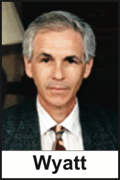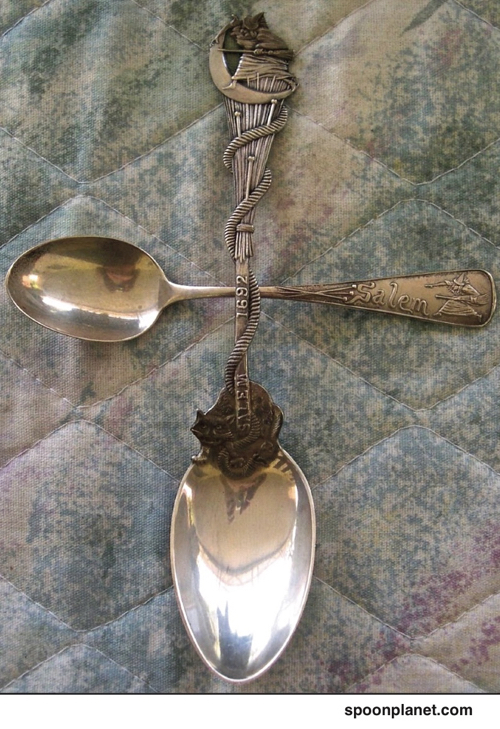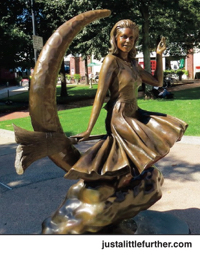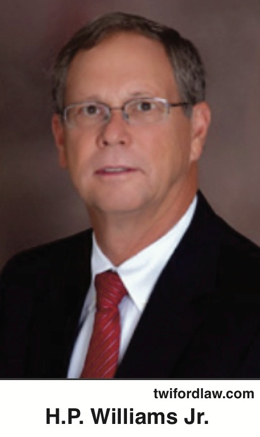Rascals case in brief
In the beginning, in 1989, more than 90 children at the Little Rascals Day Care Center in Edenton, North Carolina, accused a total of 20 adults with 429 instances of sexual abuse over a three-year period. It may have all begun with one parent’s complaint about punishment given her child.
Among the alleged perpetrators: the sheriff and mayor. But prosecutors would charge only Robin Byrum, Darlene Harris, Elizabeth “Betsy” Kelly, Robert “Bob” Kelly, Willard Scott Privott, Shelley Stone and Dawn Wilson – the Edenton 7.
Along with sodomy and beatings, allegations included a baby killed with a handgun, a child being hung upside down from a tree and being set on fire and countless other fantastic incidents involving spaceships, hot air balloons, pirate ships and trained sharks.
By the time prosecutors dropped the last charges in 1997, Little Rascals had become North Carolina’s longest and most costly criminal trial. Prosecutors kept defendants jailed in hopes at least one would turn against their supposed co-conspirators. Remarkably, none did. Another shameful record: Five defendants had to wait longer to face their accusers in court than anyone else in North Carolina history.
Between 1991 and 1997, Ofra Bikel produced three extraordinary episodes on the Little Rascals case for the PBS series “Frontline.” Although “Innocence Lost” did not deter prosecutors, it exposed their tactics and fostered nationwide skepticism and dismay.
With each passing year, the absurdity of the Little Rascals charges has become more obvious. But no admission of error has ever come from prosecutors, police, interviewers or parents. This site is devoted to the issues raised by this case.
On Facebook
Click for earlier Facebook posts archived on this site
Click to go to
Today’s random selection from the Little Rascals Day Care archives….
Click for earlier Facebook posts archived on this site
Click to go to
Today’s random selection from the Little Rascals Day Care archives….
Disapproval of prosecutors ‘about to hit a tipping point’

facebook.com
Juleyka Lantigua-Williams
May 31, 2016
“A consensus is building around the need to seriously rethink the role of the prosecutor in the administration of justice. Power dynamics are unbalanced, sentencing guidelines are outdated, and old-fashioned human biases persist. And prosecutors – singularly independent agents in a justice system roiling in turmoil – have been facing growing criticism and public distrust for some time, and that disapproval is about to hit a tipping point.
“It’s time to curtail the power long held by these officers of the court as they promote justice, ensure fairness, and enhance public safety.”
– From “Are Prosecutors the Key to Justice Reform?” by Juleyka Lantigua-Williams in the Atlantic (May 18)
Is the North Carolina Bar ready to take the first step toward holding prosecutors accountable?
![]()
Forensic evaluator or therapist? A distinction not made
 March 23, 2012
March 23, 2012
“A given professional must undertake either a forensic examination or therapy, not both, with any given child.
“The roles of forensic evaluator and ongoing therapist are different. The forensic evaluator must not become an advocate for the child, a role often difficult to avoid when one is an ongoing therapist.
“For this reason the American Psychological Association’s Guidelines for Psychological Evaluations in Child Protection Matters (1999) holds, ‘Psychologists generally do not conduct psychological evaluations in child protection matters in which they serve in a therapeutic role for the child or the immediate family or have had other involvement that may compromise
their objectivity.’ ”
– From “A Behavior Analytic Look at Contemporary Issues in the Assessment of Child
Sexual Abuse” by W. Joseph Wyatt in The Behavior Analyst Today (March 22, 2007)
By serving enthusiastically as agents of the prosecution, Betty Robertson, Judy Abbott, Susan Childers and Michele Zimmerman not only ignored that crucial ethical distinction, but also fostered psychological havoc where there had been none.
Salem profits from its historic shame – so why shouldn’t Edenton?
 Oct. 29, 2015
Oct. 29, 2015
“You have to be … inventive to brand yourself as a Halloween capital – extending a one-night affair into a monthlong celebration and inviting hundreds of thousands of visitors into your streets – when for centuries you were known as the community that put innocents to death for witchcraft. How did Salem, Mass., repackage a tragedy as a holiday, appointing itself ‘Witch City’ in the process?…
“About 200 years after the trials, a Salem silversmith issued a souvenir spoon, featuring a witch holding a broomstick. Other mementos followed. It was difficult to hit the right note: The Salem-based Parker Brothers company issued, then quickly discontinued, a witchcraft card game…. When Arthur Miller visited Salem in 1952, he discovered the subject was taboo….
“Meanwhile the city fell on hard times…. As if by magic, a different kind of enchantment arrived in the form of the ABC sitcom, ‘Bewitched.’ It seemed that an ancestor of Samantha, the main character, had been convicted of witchcraft during the trials….
“In Samantha’s wake, Salem recast its inglorious past, or at least some version of it…. The city transmuted its secret shame into its saving grace. In 1982 it introduced ‘Haunted Happenings,’ later extending the holiday into a four-week festival. ‘Salem owns Halloween like the North Pole owns Christmas,’ The Boston Globe declared…. Halloween is to some extent year-round in Salem, where you might well bump into a goblin in a sandwich shop in July.
 “Three hundred years after the trials, Salem unveiled an elegant, understated memorial to the victims. Three hundred and thirteen years after the trials, it unveiled a gleaming statue of the ‘Bewitched’ star, Elizabeth Montgomery, on a broom. Not everyone liked the idea: A former historic district commissioner clucked that one might as well plant a likeness of Colonel Klink at Auschwitz. But the 1992 memorial was arguably not itself possible without ‘Bewitched.’ It isn’t easy to commemorate an atrocity. ABC’s domestic goddess had both laundered and folded the history….”
“Three hundred years after the trials, Salem unveiled an elegant, understated memorial to the victims. Three hundred and thirteen years after the trials, it unveiled a gleaming statue of the ‘Bewitched’ star, Elizabeth Montgomery, on a broom. Not everyone liked the idea: A former historic district commissioner clucked that one might as well plant a likeness of Colonel Klink at Auschwitz. But the 1992 memorial was arguably not itself possible without ‘Bewitched.’ It isn’t easy to commemorate an atrocity. ABC’s domestic goddess had both laundered and folded the history….”
– From “First, Kill the Witches. Then, Celebrate Them.” by Stacy Schiff in the New York Times (Oct. 24)
Edenton may lack the springboard of a popular sitcom, but this 1993 letter writer foresaw the tourism potential of remembering the Little Rascals case. Proposals for a statue – or a spoon – anyone?
It’s not just politics that make strange bedfellows
 June 23, 2014
June 23, 2014
“The emphasis has got to be on the crime. Once you start using labels like satanic, sadistic or ritualistic, then you’re immediately raising a red flag…. Law enforcement, prosecutors, judges, mental health professionals and especially the general public begin to back off, because it’s so hard to believe these things happen…. We emphasized rape, sex offense, indecent liberties, crimes against nature…Those were the crimes that Bob Kelly was convicted of, those are what the jury heard evidence of….
“We let the defense attorneys bring out the sadistic and ritualistic….”
– From District Attorney H. P. Williams Jr.’s address to “From Heartbreak Through Healing: Facing the Reality of Sexual and Ritual Abuse of Children,” the first national convention of Believe the Children (April 2-4, 1993, in Arlington Heights, Ill.)
I transcribed Williams’ cautionary prosecutorial advice from audiotapes, so I can only imagine the scene on the speakers’ dais he shared with not only one of the Little Rascals mothers, but also Laura Buchanan, author of “Satan’s Child: A Survivor’s Story That Can Help Others Heal from Cultic Ritual Abuse.”
What must have Williams been thinking as Buchanan earnestly recalled that:
“We stood poised with knives in an incomprehensible world where children killed children…. Permitted to live until age four (my sister) was sacrificed by my parents…. My final programming, as a teenager, occurred on an autopsy table in the coroner’s office. A surgical procedure was staged and through a small incision in my scalp I was told that a surveillance device would be inserted into my brain. The supposed implant would be used at national headquarters to continuously monitor my thoughts. For decades the programming was extremely effective. Until the age of 44, I had no idea that my parents practiced satanism….”
With Bob Kelly and Dawn Wilson locked away, and the overturning of their convictions still two years away, DA Williams was riding high. But surely he must have experienced the slightest frisson of doubt when he saw Buchanan’s patent insanity being swallowed whole by the same audience that so enthusiastically applauded his case against the Edenton Seven.











0 CommentsComment on Facebook